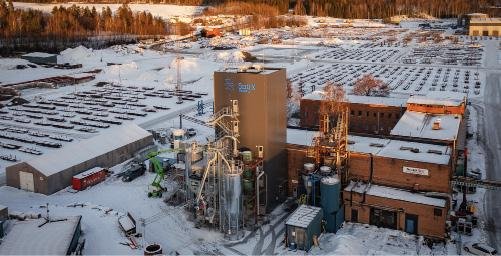Electrification has begun whispering its new rhythms across cement production facilities, a crescendo that threatens the echo of familiar fuels with bolts of transformation. Once relegated to the periphery of industrial innovation, electric-powered processes are gathering momentum as climate tech’s wild card in 2024—reshaping how we imagine infrastructure at its most granular foundations.
Cement manufacturing, often maligned for its formidable carbon profile (responsible for about 8% of global CO₂ emissions), now stands at an electrifying crossroads. Historically, this sector remained moored to tradition: immense kilns aglow with pulverized coal and petcoke, brittle limestone surrendering calcium and CO₂ in stone-bound reverie. One might expect a swift decline in such emission-heavy routines. The sector instead assembles many disparate ideas—electrical resistance heating sidles up beside plasma-assisted curing or even microwave-based calcination methods—skirting consensus but tantalizingly inching forward.
Notably, research from Umeå University spotlights how electrification paired with carbon capture changes the rules mid-game. A curious thing emerges: situating cement reactions within atmospheres saturated by CO₂ doesn’t hinder productivity; on the contrary, it sometimes quickens mineral formation inside clinker phases. Under plasma-assisted schemes or oxy-fuel combustion environments dense with carbon dioxide, surprising gains unfold—not only do overall emissions decrease (with fewer hydrocarbons burned), but reaction efficiencies improve too. Material scientists delight when serendipity aligns process chemistry with sustainable purpose—the industry is not always so lucky.
A variety of institutions have thrown their weight behind these electric ambitions—as if innovation itself required academic peer support group meetings. Arizona State University collaborates alongside heavyweights like CEMEX and CRH to prototype multiple avenues: electrical resistance furnaces flicker quietly next door while microwaves hum through their own fine-tuned trials. The US EPIXC initiative works feverishly supplying not just tech blueprints but workforce skills crucial for decarbonized industry—a less conspicuous aspect than reactor design yet perhaps more vital.
However convinced researchers may be regarding electrification’s promise (and they do sound quite taken by it), obstacles tug beneath progress’s surface tension. Capital costs lurk menacingly; retrofitting entrenched plants devours budgets quickly or insincerely promises paybacks long after current CEOs retire. Regulatory winds must shift as well—incentives lag behind ambition and energy grids remain patchwork affairs unable to supply renewable power reliably enough for thermal-intensive operations everywhere.
Europe shines light through foggy challenges: start-ups like Ecocem parade preview versions of low-carbon “ACT” cements merging supplementary cementitious materials (SCMs) like slag or fly ash alongside limestone fillers—and admixtures whose recipes remain closely guarded secrets. Their pilot production demonstrates greenhouse gas reductions exceeding seventy percent against conventional blends—a statistic boldly supportive yet quietly sipping from specific trial runs rather than mass adoption just yet.
Energy source reformation occupies perhaps the center stage—but it is hardly alone there. Innovations radiate outward into secondary domains: digital twins model kiln internals under vastly different heating profiles while early-stage AI algorithms nudge adjustments mid-reaction—a paradox since some argue AI systems themselves could fuel environmental disasters given high computational demands elsewhere. That’s probably less plausible though when set against heavy-industry emissions portfolios.
Oddly enough—or perhaps predictably so given complex supply chains—the North American scene pivots frequently between old-school inertia and visionary pilots barely outpacing policy frameworks built around fossil economies decades old. Retrofitting faltering European facilities gets much attention lately, though one wonders if revitalization projects help erase sunk costs more than push true paradigm shifts.
Beneath slick press statements thrum quieter realities associated with mineralogical tweaks—the addition of belite-promoting fluxes here reduces requisite kiln temperatures by unexpected margins; somewhere else a tweak in tri-calcium silicate ratios pays off during subsequent grinding stages over weeks rather than centuries-old practices demanding months-long maturation cycles otherwise considered best practice less than five years ago.
Equipment manufacturers ruminate on potential product lines once full-scale electrotechnology becomes standard—not because demand isn’t real but because certainty remains slippery underfoot amid ever-changing regulatory matrices and raw material logistics suddenly complicated by international trade hiccups last quarter dwarfed prior technical barriers seemingly impossible before then.
Cement construction companies meanwhile embrace ambiguity differently: one week championing net-zero blueprints reliant on soon-to-be-retrofit kilns operating solely via wind-backed grid power; another week reconsidering blended cements as the stopgap solution until renewables sort themselves out further upstream—all the while silently conceding that compliance markets will inevitably lag behind voluntary ratings schemes this time around instead being first-movers as might have happened five years back
Innovation—in all its unharmonious folds—leans increasingly upon electrification throughout climate tech’s evolving landscape in 2024. It does so awkwardly at times—with inconsistent regulations globally—but unmistakably marks a bold redirection away from yesterday’s calcined relics towards tomorrow’s foundation stones still warm from currents pulsed rather than combusted into lasting shape.


